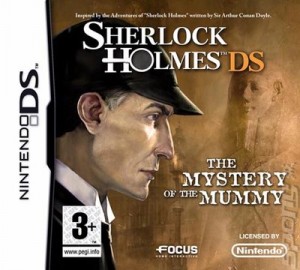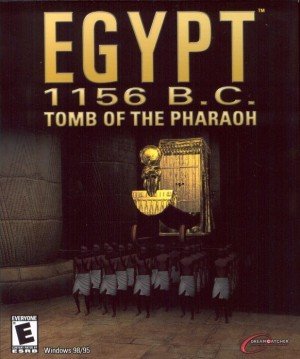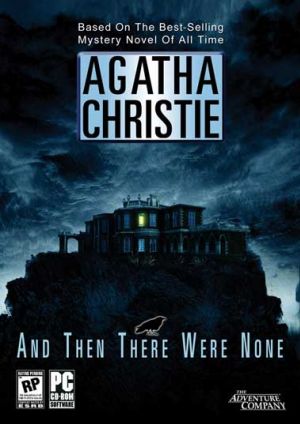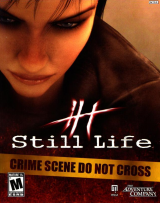Review for Sherlock Holmes: The Mystery of the Mummy (DS)

As a fan of the literary Sherlock Holmes (read all the stories, been to the museum at 221b Baker Street and have the keyring to prove it), I was keen to check out Sherlock Holmes: The Mystery of the Mummy, a Nintendo DS port of Frogwares’ first Sherlock Holmes game. I played the 2003 original on PC and had mixed feelings about the game at the time. That was a while ago, though, so I came to this handheld version with an open mind and a sense of excitement that there was now a Holmes game on the DS. The first version had some fairly significant flaws, but I was willing to take a chance that the DS port had improved on its predecessor in those areas. As it turns out, it does in some ways, but not enough to drastically affect the quality of the game.
For those who haven’t played the original game, Sherlock is called in to investigate the disappearance of Lord Montcalfe by his soon-to-be-cousin Elizabeth. The whole game takes place in Montcalfe’s mansion, and as Holmes unravels the clues and defeats the puzzles set before him, he gets closer to solving the mystery of Lord Montcalfe’s disappearance. The plot twists and turns as Sherlock uncovers evidence of hidden Egyptian treasures and treacherous relatives, suggesting Lord Montcalfe’s disappearance may not be what it first appears. The story bears little resemblance to anything you might find in the writings of Sir Arthur Conan Doyle; it isn’t terrible, just at times more Scooby Doo than Sherlock. Still, while a bit corny, the string of clues you find along the way should sustain interest in following the game to its conclusion.
All the action is shown directly through the detective's eyes, and Watson is disappointingly absent during most of the game. In fact, for the most part there is only one character in the game, and that’s Sherlock. Holmes likes to talk to himself, however, so there is dialogue during the game, though mainly in the form of exclamations when he discovers the solution to a puzzle or warns against doing something. There are others involved at times, but with a single exception late in the game, everyone else is presented only in cutscenes or through the letters found in the mansion. Such isolation doesn’t detract too much from the game, as the focus of this particular mystery is on the puzzles, which at times gives it a Myst-like feel.
What isn’t Myst-like is the fact that Mystery of the Mummy is largely an inventory-based game. This is the part of the original game that I found so appealing, and the puzzles are generally, well… elementary, in the sense that it is obvious what needs to be done. One example of an early puzzle involves finding and organising a series of coins to unlock a door. The puzzle is logical and there are clues hidden in the environment which are essential for its solution. Another favourite type of puzzle in this game is finding objects to light your way, either with lamps or makeshift torches. There is the odd occasion where a puzzle can be annoyingly illogical or the solution too obscure, like a rotating room where you seem to move randomly rather than anything resembling a circular pattern, but these are few and far between.
Inventory items can be collected as you walk around, and some objects will need to be combined in order to solve problems. On the DS, your inventory is always visible in the top screen, and a simple button press brings it down into the bottom screen for use. My main problem with solving the puzzles in this game was not in figuring out the solutions, but in finding the hotspots on the small screen. You can scan an area time and time again and still miss that elusive item, which can be incredibly frustrating. In this respect, a hotspot finder would have improved the game to no end and made the puzzles much more enjoyable.
There are also some classic logic puzzles, such as arranging items in a particular way so that they’re balanced or completing a particular pattern. None of these are too taxing, and can often be solved by trial and error if necessary. A big feature of the game is its timed puzzles, however, which result in Holmes’ death if you let the clock run out. Other puzzles, if done incorrectly, will trigger a booby trap and kill Sherlock. Fortunately, most of the timed puzzles can easily be completed before the time runs out and just serve to add suspense. There’s only one point I found it very likely to get Holmes killed, which involves turning keys in the wrong direction. This was true of the original as well, and while this time I had the benefit of previous experience, my memory of the dangers and solutions had faded to the point that it offered no real advantage.
To help you with your problem solving, the DS version includes a very handy notepad feature, where you can manually jot down notes like you would on a real piece of paper. Even though I only used it once, this is an excellent addition which should be standard for all DS adventures. Apart from that, there are two differences I noticed between puzzles in the PC and DS versions. One puzzle involving a hidden panel and a search for dates is now missing at the beginning, which is no great loss, and one has been added to utilise the dual screens. How it uses the second screen is impossible to describe without giving away the solution, but I’ve never seen it used that way before and it is quite ingenious. It’s a shame not to see more DS-specific puzzles included, though not really a surprise from a port.
As well as the inventory and notepad, all letters, books and clues you find along the way are stored for easy access. It’s important that you read everything picked up in Mystery of the Mummy, as there are many clues to help with puzzle solutions, though some just flesh out the story and give hints as to what the final revelation is going to be. When reading these documents, they fill each screen, so there’s no need to zoom in or scroll, which makes for easy viewing.
The dialogue is intact from the original PC version, including full voice acting. It’s unusual to have so much speech in a DS port, and normally I’d find this exciting, but unfortunately nothing’s been done to improve upon what was originally poor voice work at best. Naturally, the main problem is the voice of Holmes, as most of the dialogue is his, and the delivery here is just plain odd at times, not helped by yet another truly awful British accent in an adventure game. What’s worse is that if you have subtitles on, the spoken dialogue is often different from the text box at the bottom, which makes it pointless to have both on at the same time. Given the poor quality of the acting, in most cases I favoured having the sound turned down and subtitles on. Another gripe is that a certain secondary character sounds indistinguishable from Sherlock, as it’s clearly the same actor doing the voice. This wouldn’t be such a big deal normally, but here it makes one puzzle in particular rather baffling at first.
In the graphics department there is nothing new, with the same grainy graphics present from the original. Disappointingly, they don’t look any better on the small DS screen, only adding to the difficulty of finding the less obvious items and clues. While the game is set entirely in a single mansion, there are still some interesting sights, including rooms with Egyptian exhibits that look like they were taken out of the British museum, and Lord Montcalfe’s study and library. The cutscenes don’t look too bad, and the game does manage to be atmospheric in places. And although the graphics may not be stunning, you can look around any room 360 degrees, and somewhat vertically as well. This is fairly well executed and quite important, because the ceiling and other unlikely places can be necessary for solving puzzles.
The DS interface is fairly simple, and won’t take long to get the hang of. To view your surroundings, you simply drag the stylus around the screen or use the +Control pad to move the cursor and rotate the camera. The default cursor changes as soon as you move it over a hotspot. To move forward or pick things up, you simply tap the screen when the appropriate cursor appears. When you can investigate something closer, a magnifying glass will appear, and when an object is needed there, still another cursor will display. These point-and-tap dynamics don’t pose much of a learning curve, but there’s an optional tutorial at the beginning which is quite useful for familiarisation with the other features of the game. One important addition to the DS version is a hint system that functions a little bit like UHS. Hints are available for each of the game’s five stages, further divided into the rooms in that level. By selecting the room you are stuck in, you can go through the puzzle details step by step, finally culminating in the solution. This is quite handy, and tempting to turn to when the game tries your patience, especially since there is no negative impact on the game for doing so.
There are the usual options available for this game, including SFX volume, which thankfully mutes Holmes but unfortunately lowers the music as well. This is a shame, as the soundtrack is quite good and easily the best audio element of the game, adding suspense when Sherlock isn’t talking. The ending of the game is fine, as it ties all the story threads together reasonably, but the poor voice work is particularly prevalent at this point. This didn’t leave me eager to follow Holmes on another adventure, further contributing to the sense that this may not be the best introduction to the great detective on DS.
After playing The Mystery of the Mummy for the second time, I would say it’s a marginal improvement over the PC version. If not for a couple of features unique to the DS version, there would be little to distinguish it from its predecessor. The flaws that let the original game down are still present, as the poor voice work, near impossible-to-find hotspots, and grainy graphics are all back. It took me about 8-10 hours to reach the end this time, with the luxury of having played it before, but I found myself dipping in and out, as it really didn’t hold my attention that long. For those who played the original game, there’s certainly no reason to pick up this handheld successor. For Sherlock fans, I’d rank this as more of a Basil Rathbone than a Jeremy Brett on the Holmes-o-meter; somewhat enjoyable but wildly inaccurate. And for DS fans simply looking for a good adventure, I’d largely recommend holding out for better mysteries than this.


























